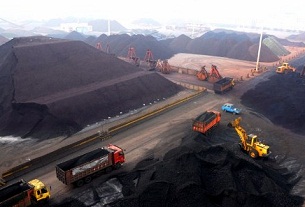October 26, 2014 – For more than a decade China’s coal consumption has increased 5 to 10% annually. But in 2014 through nine months consumption has decreased between 1 and 2% according to Greenpeace.
Is this a sign that China is tackling carbon emissions with the same determination that it has applied to economic growth? Or is it a condition of a slowing Chinese economy? Probably a bit of both along with a move to growth in service industries in China rather than expanded investment in heavy industry.
China’s economy has tripled in the last 12 years. China’s coal consumption has more than doubled during that period. Today the country emits 30% of the world’s carbon dioxide at a rate of 7.2 tons per person per year. That makes it the biggest polluter on the planet, bigger than Europe and bigger than the United States. So in September’s Climate Summit at the United Nations in New York City, when China’s Vice Premier pledged to “make greater effort to more effectively address climate change,” it was difficult to believe in the sincerity of his remarks.
In China’s state news agency recently stated the following government position: “We cannot put aside the past when we look into the future. The carbon dioxide currently in the atmosphere was mostly produced during the industrialized process of the developed countries.” This pointing of fingers has been the Achilles Heel of climate negotiations. Why countries pulling themselves up economically should be subject to the same carbon emissions rules as those who created the problem in the first place, is a poor defense when the entire world is impacted by climate change. And as true as the observation may be, it does not address China’s contributions to climate change over the past few decades and going forward through its massive expansion of the economy accompanied by burning carbon at unprecedented rates.
China recently announced that in 12 of its 44 provinces, coal consumption controls have been put in place. The goal, to cut carbon intensity per unit of energy produced by up to 45% in 2020. Of course, as I have often stated, carbon intensity looks better on paper than it does in the environment, particularly when a country is growing the amount of coal and fossil fuels it consumes. The reduction benefits get offset by the growth leading to even more carbon entering the atmosphere.
The decline in coal consumption in 2014, when combined with intensity reductions, however, is a far more hopeful sign than all the statements coming from Chinese officialdom. It will be interesting to see what China has to offer in its next five year plan covering 2016 to 2020. From where will China derive most of its energy capacity? Clearly if we are to believe the assurances of China’s leaders it will not come from coal but from hydroelectric, wind and solar.



















